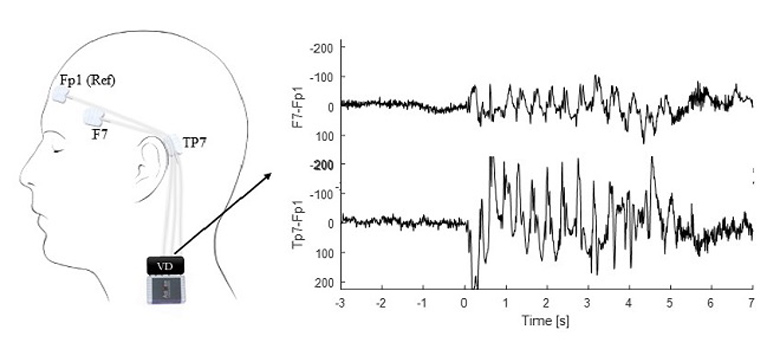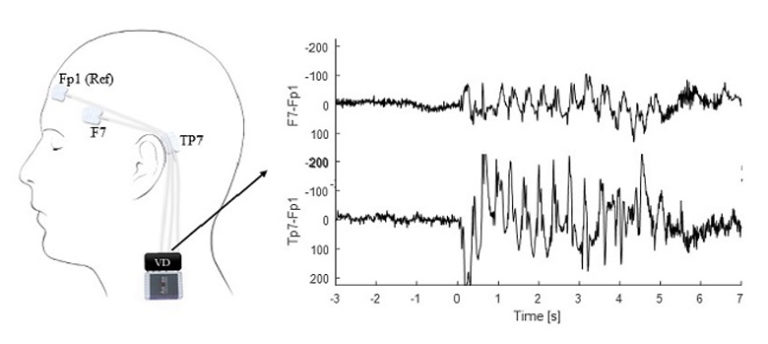
Absence seizures are associated with generalized 2.5-5 Hz spike-wave discharges in the electroencephalogram (EEG). Rarely are patients, parents, or physicians aware of the duration or incidence of seizures. Six patients were monitored with a portable EEG-device over four times 24 h to evaluate how easily outpatients are monitored and how well an automatic seizure detection algorithm can identify the absences. Based on patient-specific modeling, we achieved a sensitivity of 98.4% with only 0.23 false detections per hour. This yields a clinically satisfying performance with a positive predictive value of 87.1%. Portable EEG-recorders identifying paroxystic events in epilepsy outpatients are a promising tool for patients and physicians dealing with absence epilepsy. Albeit the small size of the EEG-device, some children still complained about the obtrusive nature of the device. We aim at developing less obtrusive though still very efficient devices, e.g., hidden in the ear canal or below the skin.
Editor’s Comment
Clinical Editor, Steven Schachter, MD
 An absence seizure is a common seizure type in childhood epilepsy, where it may occur dozens if not hundreds of times each day, especially before medical therapy is initiated. Documentation of the characteristic electroencephalographic pattern of absence seizures and the frequency of absence seizure occurrence over time is necessary to guide medication selection and dosing, but informing physicians of absence seizure frequency is problematic for patients as well as observers such as family members and teachers because this seizure type is characterized by brevity and the usual lack of overt behaviors that stand out. Therefore, an accurate, unobtrusive, worn detector capable of objectively quantifying the frequency of absence seizures with clinically-acceptable rates of false-positive and false-negative detections would help clinicians optimize treatment for absence seizures.
An absence seizure is a common seizure type in childhood epilepsy, where it may occur dozens if not hundreds of times each day, especially before medical therapy is initiated. Documentation of the characteristic electroencephalographic pattern of absence seizures and the frequency of absence seizure occurrence over time is necessary to guide medication selection and dosing, but informing physicians of absence seizure frequency is problematic for patients as well as observers such as family members and teachers because this seizure type is characterized by brevity and the usual lack of overt behaviors that stand out. Therefore, an accurate, unobtrusive, worn detector capable of objectively quantifying the frequency of absence seizures with clinically-acceptable rates of false-positive and false-negative detections would help clinicians optimize treatment for absence seizures.
Kjaer et al. describe a clinical study of a worn seizure detector in six children with absence seizures and show proof-of-feasibility that long-term monitoring with a small EEG device is possible in this population and that a patient-specific method for algorithmic detection of absence seizures lasting more than 3 seconds provides clinically relevant performance. The next step in development, as noted by the authors, is to package the device in a form that is acceptable for long-term use by the end-user.

